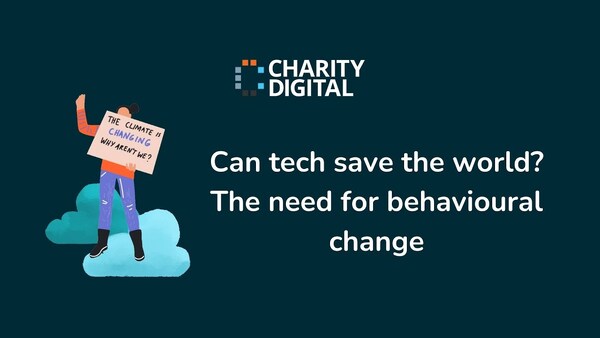Insights
INSIGHTS
All Topics
How to improve your annual report
We look at some tips and tricks to help charities create the best possible annual reports
The trustees’ annual report (TAR) is an important task for any charity. On the one hand it’s an essential ‘hygiene factor’. On the other hand, it’s a valuable piece of marketing collateral.
With a job as daunting as an annual report, it can be tempting to do it how you’ve always done it. But there’s always value in stepping back to think about doing things differently.
Understanding the basics
Unless you’re exempt, you’ll need to prepare a TAR. If you are a registered charitable company, you’ll also need to submit a director’s report.
The detail needed in your TAR varies, depending on the size of your charity. Charities with income and assets over a certain threshold must have their financial accounts audited. Find out what you need to do on GOV.UK.
The statutory information normally forms the back section of the TAR, which can be fairly basic in terms of design.
Planning the glossy section
The front pages of the TAR are often called the glossy section, although fewer charities now produce printed reports. Here you can use your brand messaging and visual identity to their full potential and get more creative.
You can tell the story of your year and tell the world about your impact.
Smaller charities don’t need to share as much detail as larger organisations. That said, it’s worth doing a thorough job. A great annual report can have even more value when you’re less well-known. It’s a wonderful way to inspire and reassure your stakeholders.
D’Arcy Myers is an experienced charity consultant and interim CEO. He told Charity Digital: "You have a duty of care to be the most efficient [organisation] you can be because your stakeholders are trusting you to spend your funds wisely, to deliver what you set out to do, and to have an impact.
"With a good annual report, you can show how you’ve risen to the challenges, both good and bad, and paint a picture of the difference you’ve made."
Making your report work harder
Your annual report doesn’t need to be a one-shot deal, to be published on your website and never looked at again.
Your success stories, photos, and infographics can all be repurposed. They can provide material for your newsletter and social media for months to come. As D’Arcy explained, “If you do your annual report well, you’ll have a wealth of material you can repurpose and use in your comms all year round.”
But one potential barrier to making the best use of all this material is timing.
Thinking about timing
It can take months to get the financial signed off by auditors and trustees. Some content may have lost its relevance by the time you publish, so this protracted timeline can take some of the shine off your successes.
One possible solution is to separate the statutory reporting from the glossy section. You can publish a separate ‘impact report’ much earlier than your audited accounts. This way you can give your successes the fanfare they deserve.
If you take this route, you can prepare your impact report much sooner. There would likely be some repetition across the two documents, but your Annual Report can be more stripped back, purely for compliance, to meet the Charities Statement of Recommended Practice (SORP).
We spoke to Kunal Mistry at Buzzacott, an accountancy firm that works with not-for-profit organisations. He explained, “You can publish a glossy impact report separately to the financials, if there’s no reference to being audited. For consistency with the ultimately audited numbers and annual report, you would probably want to hold back any financial data until you have your audited numbers. But a separate impact report can be useful for stakeholders, and is a timely way to celebrate your work.”
Thinking about audience
For your glossy impact report, consider who the document is for – beyond the statutory stuff for the Charity Commission. This is your chance to share the impact you’re making.
You might aim to:
- Reassure funders and donors that you’re spending their money wisely
- Appeal to new staff or volunteers by showing what life is like at the charity, and the difference you’re making
- Encourage collaboration with other organisations, researchers, policymakers, or the media
- Speak directly to your service users or beneficiaries
- Thank people for their part in your success
Think who you most want to reach and what will interest them. Also consider what you need them to do afterwards and leave them with a strong call to action.
Telling compelling stories
For most people, nothing beats a great story. Big numbers and stats are great, but the stories you tell will really bring your report to life.
Capture some compelling stories, especially the voices and lived experiences of the people you support. They’ll have impact for readers, even if they need to be anonymised to protect the individual. One great example is Save the Children, whose annual report opens with the voices of young people. They feature a Somali child, and members of the charity’s UK Youth Advisory Board.
You can also show what life is like for your staff, trustees, or volunteers. For some charities it may be important to talk about the partnerships you’ve formed and the research you support.
Making it accessible
Sharing information in a PDF is no longer best practice, so look at other ways to present your annual report. At the very least, make any PDFs accessible or share a well-formatted Word document to help people using screen readers.
A digital-first approach to the glossy section is ideal. Macmillan’s annual report has an excellent landing page, where key impacts are summarised and infographics are also explained as text. There are plain text options available and a video summary in BSL.
Explore different ways to do an annual report and check out six impact reports to inspire you. There’s also a great case study for SeeAbility on CharityComms.
Denise Atkins
More on this topic
Recommended Products
Recommended Products
Related Videos
Our Events
Q&A session: An introduction to Microsoft Copilot
Join us on the 14th of May for our Q&A session. It will provide a whistlestop tour of Microsoft Copilot’s key capabilities, how they can help charities, and answer all your burning questions around Microsoft’s AI service.
We use cookies so we can provide you with the best online experience. By continuing to browse this site you are agreeing to our use of cookies. Click on the banner to find out more.


















